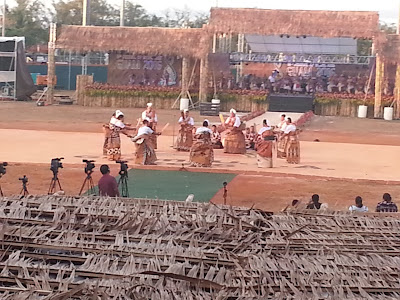The Festival of the Pacific Arts has been held every four years since 1972
and brings together artists and cultural practitioners from around the Pacific
region for two weeks of festivity. It is recognized as a major regional
cultural event and is the largest gathering in which Pacific peoples unite to
enhance their respect and appreciation of one another. The 27 Pacific
Island Countries and Territories that participate in the festival
are: American Samoa, Australia, Cook Islands, Easter Island, Federated
States of Micronesia, Fiji Islands, French Polynesia, Guam (2016 Host), Hawaii,
Kiribati, Marshall Islands, Nauru, New Caledonia, New Zealand, Niue, Norfolk
Island, Northern Mariana Islands, Palau, Papua New Guinea, Pitcairn Islands,
Samoa, Solomon Islands, Tokelau, Tonga, Tuvalu, Vanuatu and Wallis and Futuna.
The village before the festival!
This is the place where all the performances from the different islands performed!
The next pictures are from the festival, each of the islands presented traditional dances from their island.























